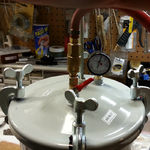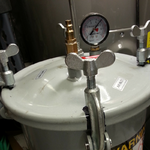Quality Pen
Member
I bought the pot and Im trying to find out the best way to turn it into a pressure pot without maiming myself... or generally doing things wrong.
I found some PDF's but they are many years old, and I know from reading many posts that there are some deep opinions on the matter.
But, is there a more recent walk-through to setting up?
For what its worth, I dont plan to go over 40 PSI...
Thanks.
I found some PDF's but they are many years old, and I know from reading many posts that there are some deep opinions on the matter.
But, is there a more recent walk-through to setting up?
For what its worth, I dont plan to go over 40 PSI...
Thanks.


